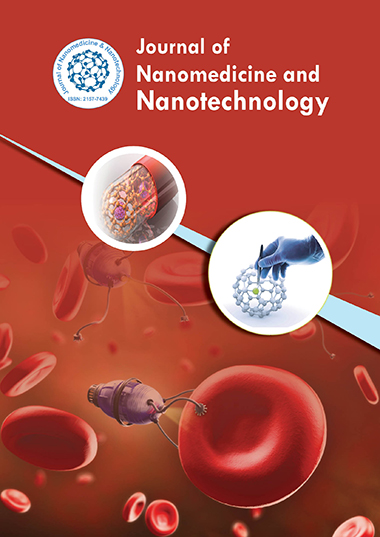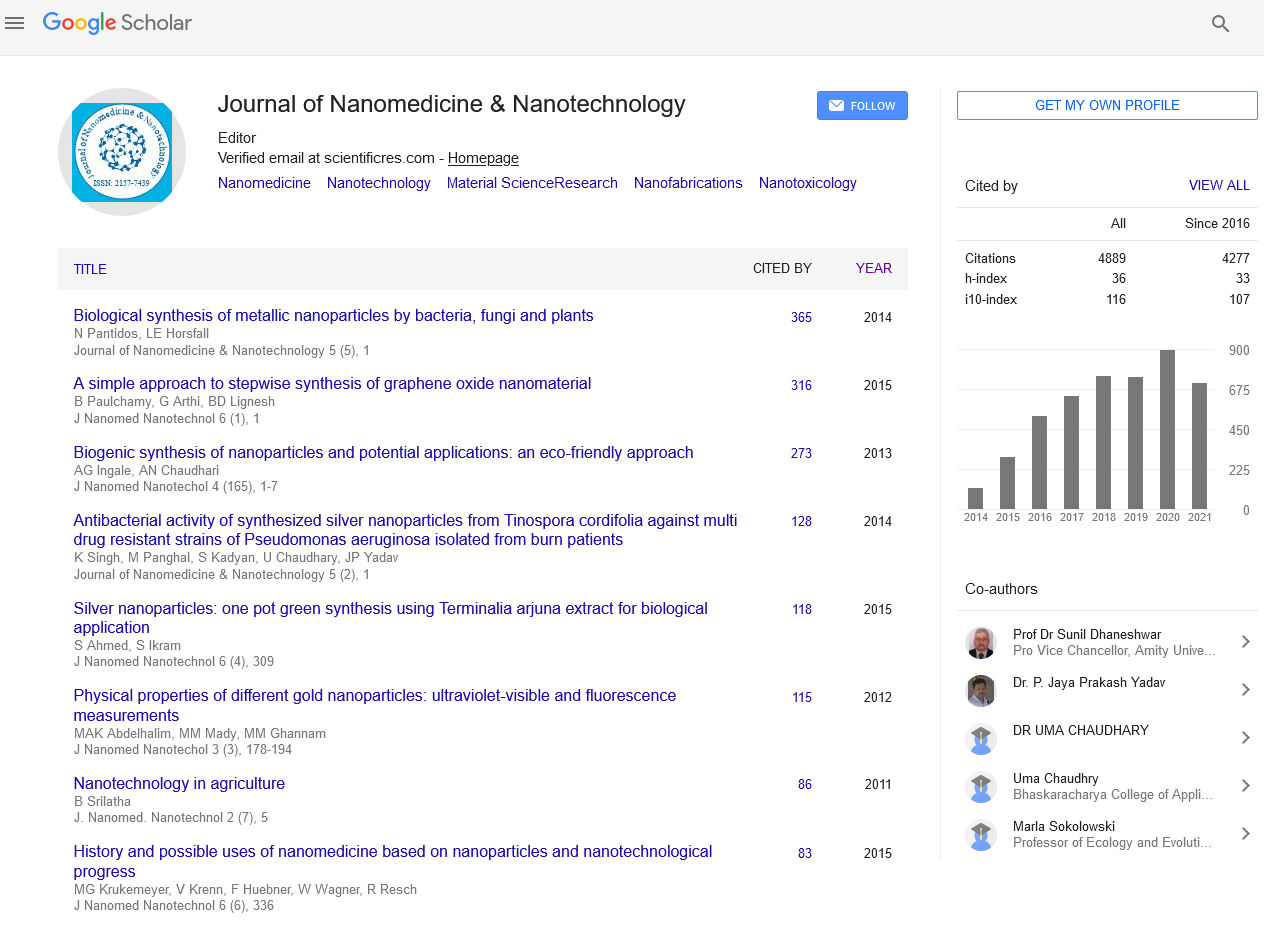Indexed In
- Open J Gate
- Genamics JournalSeek
- Academic Keys
- JournalTOCs
- ResearchBible
- China National Knowledge Infrastructure (CNKI)
- Scimago
- Ulrich's Periodicals Directory
- Electronic Journals Library
- RefSeek
- Hamdard University
- EBSCO A-Z
- OCLC- WorldCat
- SWB online catalog
- Virtual Library of Biology (vifabio)
- Publons
- MIAR
- Scientific Indexing Services (SIS)
- Euro Pub
- Google Scholar
Useful Links
Share This Page
Journal Flyer

Open Access Journals
- Agri and Aquaculture
- Biochemistry
- Bioinformatics & Systems Biology
- Business & Management
- Chemistry
- Clinical Sciences
- Engineering
- Food & Nutrition
- General Science
- Genetics & Molecular Biology
- Immunology & Microbiology
- Medical Sciences
- Neuroscience & Psychology
- Nursing & Health Care
- Pharmaceutical Sciences
Development and characterization of targeted nanoparticles loaded with Oxaliplatin for colorectal cancer treatment
20th Asia-Pacific Nanotechnology Congress
July 23-24, 2018 Sydney, Australia
Majid Hassanzadeganroudsari, Vasso Apostolopoulos and Kulmira Nurgali
Melbourne University, Australia
Victoria University, Australia
Posters & Accepted Abstracts: J Nanomed Nanotechnol
Abstract:
More than 14,800 new cases of Colorectal Cancer (CRC) are diagnosed in Australia every year. Chemotherapy is given before or after surgery to most patients. Oxaliplatin (OXL) is one of the most common anti-cancer drugs that can be used as single treatment for CRC. However, use of OXL is often limited due to its side-effects reducing efficacy of the anti-cancer treatment. In this study, OXL-loaded Nanoparticles (NPs) have been developed. NPs can accumulate more than its control formulation in the tumor, hence increasing drug concentration in cancer tissues and decreasing side-effects of chemotherapy. OXL was loaded into NPs by reverse phase evaporation method and was coated with hydrophilic polymer polyethylene glycol 3350. NPs had an average size 160±25 nm and zeta potential of -15.2±1.6 mV. Drug loading and encapsulation efficiency of NPs were 4.54±0.21% and 61.07%, respectively. The morphological analysis of NPs was performed by scanning electron microscopy and transmission electron microscopy. The characteristics of NPs have been evaluated after 2-month storage at 4 °C. Size and zeta potential of NPs were 171.7±30 nm and -15.8±1.4 mV and results illustrated that NPs have great stability over time. Free form of OXL showed a sharp release of 95.2% of drug within 10 hours. Drug release from NPs has a less slope in comparison with free drug and cumulative release of NPs was 34% (W/W) after 48 hours. OXL entrapped in NPs is more stable, therefore the plasma half-life of cytotoxic drug is prolonged while adverse effects are reduced to the minimum.
Biography :
E-mail: Majid.Hassanzadeganroudsari@vu.edu.au


